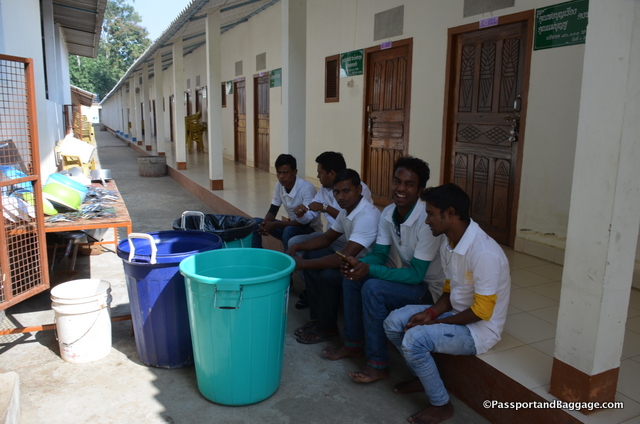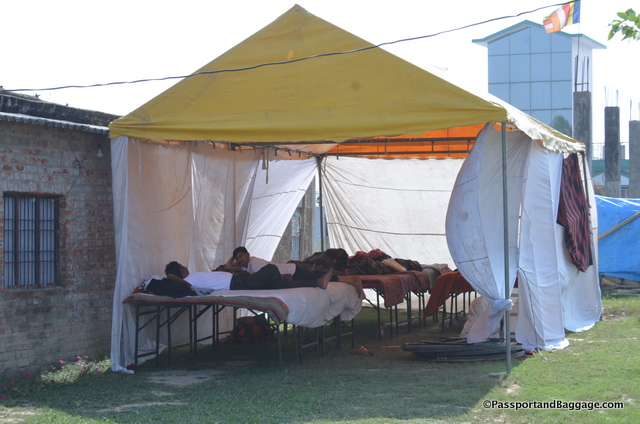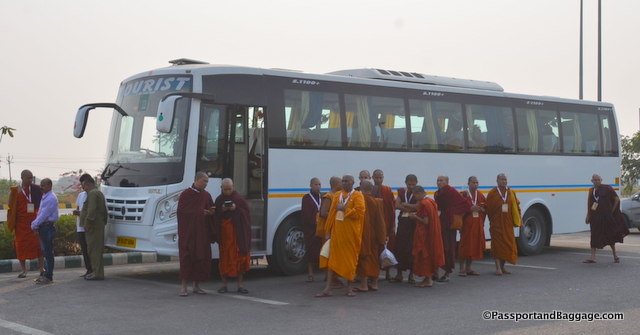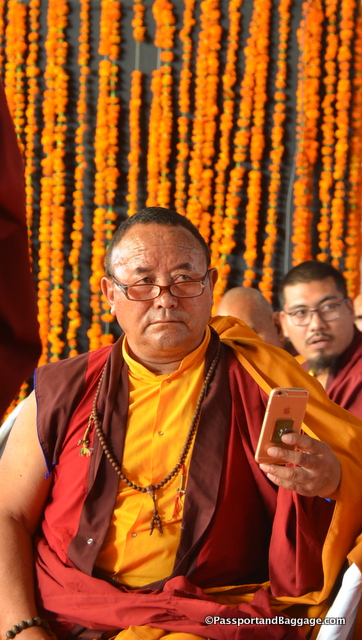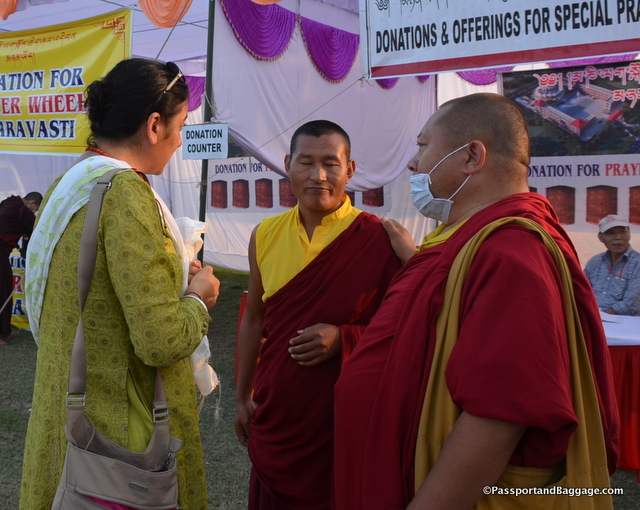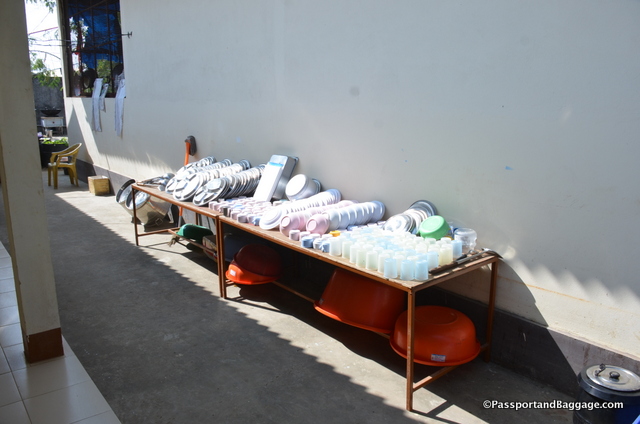November 2017
Today was a down day so I thought I would catch up on a few odds and ends.
First, our crew. They are really amazing, I have no idea who is who, I am ashamed that I haven’t really attempted to get to know them, they speak no English whatsoever, but we are all quick with a wave and a smile to each other.
I mentioned we looked like a gypsy caravan, well here is our transportation.
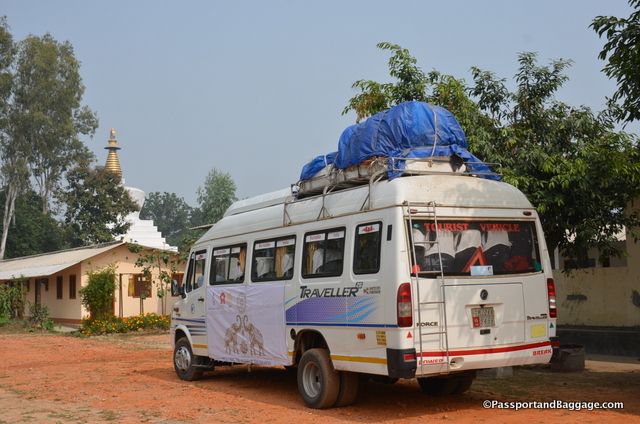 *
*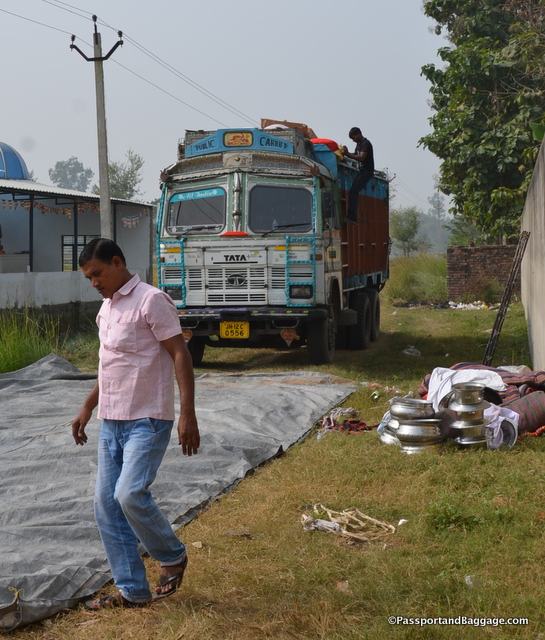 The small van and big truck usually pull up stakes after lunch on the last day and head to the next town to get ready for our arrival. I was surprised to find that this tent is where they sleep at night, like I said, Indians are used to sleeping on wood. They bring the shade and beds with them, I figured that out when I looked this morning and they were gone.
The small van and big truck usually pull up stakes after lunch on the last day and head to the next town to get ready for our arrival. I was surprised to find that this tent is where they sleep at night, like I said, Indians are used to sleeping on wood. They bring the shade and beds with them, I figured that out when I looked this morning and they were gone.
On this journey, I have become flummoxed with the differences between the various Buddhist factions, and yes, you can read all about them, believe me, I have, but until you are living tooth and jowel you don’t really get it.
Tibetan monks are from the Nyingma school (the oldest of the traditions, Nyingma actually means ancient), and this is where LBDFI came from. The Nyingma monks are very laid back. However, this might be more their culture than their religion. I have found Tibetans to be an overall happy people with a marvelous sense of life.
I was really impressed with one of the Tibetan monks that is here from Maryland. We had a discussion of how ridiculous the concept of factions is, and how Buddhists need to work together if they are ever going to be recognized as a force. But, as I said, he was a Tibetan, who found himself sent to Maryland by his teacher, so his thinking is far more western at this point. There was also a discussion about missionaries, how they come in feed the children, and educate them and then convert them to Christianity, all I could think was, stop building 90 foot gold Buddhas and get out there and do the same thing. I am learning, however, that that concept is against the way that the monks are trained. Throughout time they have always sequestered themselves in monasteries and educated themselves on Buddha’s teachings, taking it to the populace has never been a part of Buddhism.
I was also thinking, under my breath, that the Protestants and Catholics went to war for hundreds of years over idealism, so I really don’t think all the wishing and work in the world will change the silly fracturing that occurs within religion.
LBDFI has made it a point of being completely non-denominational and apolitical. And yet we have had issues on the road where Chinese temples would not join us if we supported the Dali Lama. Even though the Dali Lama has no institutional role and no religious tradition and whose function is to overcome sectarian divisions, you just can’t get past that powerful a political force.
The monks that are traveling with us are Theravadan. I have mentioned before that they are the strictest sect. Theravada emphasizes the historical Buddha, and since his original teachings were recorded in Pali, we chant in Pali. If you listened to the Tibetan chant that I put up a few posts ago, that chanting is in Tibetan.
If you interpret this strictness to its letter it means that you are not really supposed to enjoy anything. No talking during meals, don’t enjoy the food, god forbid you should hear music or watch dancing. This is also why some of the chanting is so dry, you are speaking the words of Buddha, it is not supposed to be a song, it is simply a recitation. This strictness is because your focus is to spend your time in the service of the Dharma.
This all means there are hidden rules that a layperson will seriously never understand, and certainly not me!
I am surrounded by 29 Theravadan monks who laugh uproariously, find me so funny because I smile all day long, and were absolutely gaga at the dancing one evening at the evening ceremony of the Tibetan conference.
A side note, I read a story that Desmond Tutu and the Dali Lama were very close. When Tutu visited he started doing some great African dance moves and the Dali Lama bounced his head because he wanted to acknowledge his friend, but at the same time, Tutu knew that it was a very difficult thing for the Dali Lama to do as it is forbidden. It is in the Book of Joy, by Douglas Carlton Abrams, and is a nice read if you are interested.
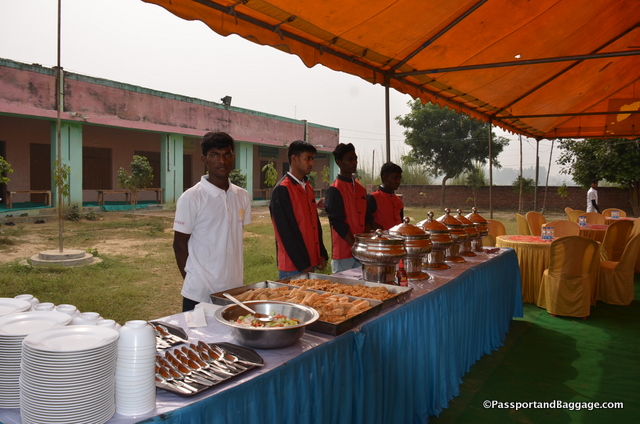
We have a crew of cooks that accompany us, but sometimes the local temple will send over a few cooks to spice things up
Lunch the other day brought me another shock. We had chicken and then lamb the next day. Seriously! I was told that as long as they are offered it they must accept it, but the under the breath comment was, that accepting it and eating it are two different things. They went through PLATEFULS.
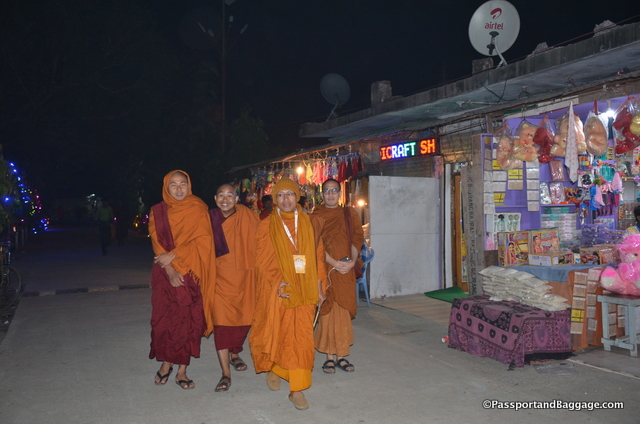 Monks are not allowed money and are not supposed to touch gold. Well…..Money is actually given to them both by us and by their sponsors, and they put my Mother to shame with their shopping abilities.
Monks are not allowed money and are not supposed to touch gold. Well…..Money is actually given to them both by us and by their sponsors, and they put my Mother to shame with their shopping abilities.
It is very typical of lay-people to place gold leaf on famous Buddhist structures, and if it doesn’t quite adhere you can see the monks put their fingers on it and play with it like children.
I have been introducing you to a few monks, and by now you have realized why I honestly don’t remember their names. I was slightly embarrassed about this until I realized no one knows their names.
This is solved by westerners with a few titles. All young monks are Bhante, this is a Pali term and used mainly for Theravadans. You sometimes hear the word Bhikkhu, usually when one is addressing a large group.
You use the term shifu if the monk is a teacher, but how do you know he is a teacher?
We have one older monk with us and will be joined by another in Bodh Gaya and they are both addressed as Dr. I assume this is because they have obtained their Ph.D., but that is just a giant guess on my part.
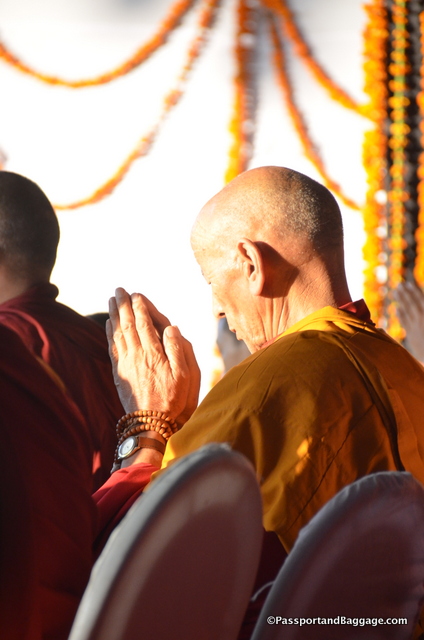 Rinpoche is an honorific used in Tibet that actually means precious one. It is used for older, respected and notable monks. We have visited several of Rinpoche’s in our travels, and the head of the Nyingma Institute, the parent company of LBDFI is Rinpoche
Rinpoche is an honorific used in Tibet that actually means precious one. It is used for older, respected and notable monks. We have visited several of Rinpoche’s in our travels, and the head of the Nyingma Institute, the parent company of LBDFI is Rinpoche
Bhikkuni is a fully ordained nun
Some random titles you hear but I have yet to use because they are Tibetan terms and we have no Tibetans with us.
Khenpo – a highly trained Tibetan monk, usually awarded after 13 years of study
Lama is also a Tibetan title used for teachers of the Dharma
I have already introduced you to someone with the title of His Holiness.
If I get to the Thai monks their names will be preceded by Phra, this is the generic term for monk in Thailand.
At the end of the evening, I sat with two women from Arizona. One was a doctor, we had a rip-roaring time discussing medicine in backwoods India. She mentioned how she was working in the medical tent with three Indian doctors. The title doctor was self-bestowed and scared her to death the way they threw two Amoxicillin at everyone and sent them on their way. She then grossed me out with the stories of all the Indian men with tinea cruris. All she could say to them was please just go take a shower. It is hard to discuss the complete lack of sanitation in this country until you have experienced it out here in the backwoods. I am not a big fan of hand sanitizer but it has become a regular ritual.
Because the big function is Tibetan she was also seeing a lot of Tibetans. They all asked to have their blood pressure taken. High blood pressure is a real problem in the Tibetan culture because of the large amount of salt in butter tea, which they drink a gallon of a day. She said she was seeing numbers as high as 200, but no comprehension on the part of the Tibetans as to why it was so high, why those numbers are so scary, let alone what to do about it. This started us on a discussion of how packaged ramen is killing people all over the world because it is so cheap and so nummy because of all the salt and chemical flavors. I experienced this in the remote areas of the Copper Canyon, where people say the far hills are littered with ramen wrappers.
The addiction I have noticed amongst most monks I encounter is sugar. They just love their sweets.
